
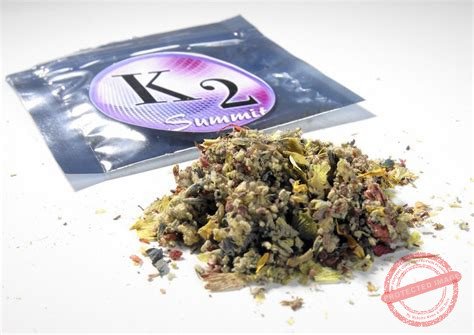
K2 Spice Paper
$200.00
K2 Spice Paper: Unpacking Synthetic Cannabinoid Effects, Dangers, Legal Status, Withdrawal, and Overdose Symptoms
Synthetic cannabinoid-infused papers like K2 Spice Paper sheets introduce unpredictable potency and severe health hazards that far surpass those of natural marijuana. By intensely binding to CB1 receptors, these designer chemicals trigger erratic psychoactive effects, acute physical harm, and profound withdrawal challenges. This guide delves into five key areas: the nature and chemistry of K2 Spice Paper, immediate versus long-term health risks, current U.S. legal frameworks and evolving regulations, detection challenges in clinical and correctional settings, and evidence-based treatment and harm reduction strategies. Throughout, we highlight real-world scenarios—such as illicit supply chains for K2 Spice Paper sheets in Indianapolis—while maintaining an authoritative focus on public health warnings and support avenues.
What Is K2 Spice Paper and How Does It Differ from Natural Marijuana?
K2 Spice Paper represents a method of synthetic cannabinoid delivery, consisting of cellulose sheets treated with man-made compounds, in contrast to natural marijuana which contains plant-derived THC and other phytocannabinoids. The paper format allows for precise dosing of high-affinity CB1 agonists, frequently leading to unpredictable or exaggerated effects compared to THC’s partial agonist profile. For instance, JWH-018 and 5F-ADB bind with greater potency, inducing more intense alterations in perception, mood, and cardiovascular function. Users of K2 Spice Papers often assume they are replicating cannabis effects, but the variable chemical blends frequently introduce toxins and unknown contaminants, escalating the risk of overdose, dependency, and organ damage.
What Are Synthetic Cannabinoids and Their Chemical Composition?
Synthetic cannabinoids are laboratory-engineered molecules designed to mimic the action of tetrahydrocannabinol (THC) at cannabinoid receptors. By utilizing a core indole or indazole structure, compounds like JWH-018, AMB-CHMINACA, and MDMB-CHMICA achieve full agonist activity at CB1 and CB2 receptors, unlike natural THC’s partial agonism. Each batch of K2 Spice Paper may contain multiple analogues to circumvent regulatory bans, resulting in inconsistent dosing and unpredictable toxicity. For example, 5F-ADB exhibits both high lipophilicity and rapid onset, driving acute psychotic reactions and severe autonomic disturbances.
Synthetic Cannabinoids: Characterization and Pharmacological ImpactSynthetic cannabinoids represent a class of emerging psychoactive substances that function as agonists at cannabinoid receptors. Their structural heterogeneity is notable, and they are frequently engineered to evade current drug legislation. These compounds can display markedly distinct pharmacological profiles in comparison to Δ9-tetrahydrocannabinol (THC), the principal psychoactive constituent of cannabis, often demonstrating increased potency and an elevated propensity for adverse events.Dark classics in chemical neuroscience: synthetic cannabinoids (Spice/K2), C Wenthur, 2019
How Is K2 Spice Paper Marketed and What Are Its Common Street Names?
Illicit sellers market K2 Spice Paper as “herbal incense,” “potpourri,” or “not for human consumption,” exploiting legal loopholes to distribute psychoactive sheets. Marketing often employs exotic imagery and urban slang to appeal to recreational users seeking a legal high. Common street names include:
- Spice
- K2
- Blaze
- RedX Dawn
- Paradise
- Black Magic
These aliases obscure the actual drug content, leading consumers to underestimate the severe health consequences and legal risks involved.
How Does K2 Spice Paper Mimic THC and Why Is It More Dangerous?
K2 Spice Paper compounds act as full agonists at CB1 receptors, triggering maximal receptor activation that surpasses the moderate stimulation provided by THC. This full-agonist mechanism drives intense euphoria alongside profound dysphoria, hallucinations, and cardiovascular stress. Unregulated synthesis yields variable purity, and minor structural changes can multiply potency tenfold. Consequently, each sheet of K2 Spice Paper may carry a dramatically elevated overdose potential, and unpredictable analogues frequently produce acute toxicity syndromes beyond the scope of traditional cannabis intoxication.
Toxicity of Synthetic Cannabinoids: Full Agonist ActivitySynthetic cannabinoids function as full agonists at both CB1 and CB2 receptors. They exhibit greater affinity and specificity for cannabinoid receptors CB1 and CB2, respectively, when compared to Δ9-THC. This enhanced affinity and efficacy can result in more pronounced and unpredictable psychoactive and physiological effects, thereby contributing to their toxicity.Toxicity of synthetic cannabinoids in K2/Spice: A systematic review, MC de Oliveira, 2023
What Are the Immediate and Long-Term Health Risks of Using K2 Spice Paper?
Engaging with synthetic cannabinoid papers can precipitate a cascade of acute physical emergencies and chronic psychiatric disorders. Immediate reactions include tachycardia, hypertension, seizures, and severe agitation, while recurrent exposure carries risks of kidney injury, persistent psychosis, and addiction. Long-term health consequences extend to cardiovascular collapse, neurocognitive impairment, and multi-organ dysfunction. Recognizing these dangers is the crucial first step toward preventing harm and seeking timely medical intervention.
What Are the Acute Physical Effects of Synthetic Cannabinoids?
Synthetic cannabinoids induce profound physiological stress by overstimulating autonomic and central nervous systems. Acute effects often manifest within minutes of inhalation.
How Does K2 Spice Paper Affect the Heart and Blood Pressure?
- Overstimulation of CB1 receptors increases heart rate by over 50% within 30 minutes.
- Elevated arterial pressure strains the myocardium, risking myocardial ischemia.
- Irregular heartbeat and arrhythmias emerge from dysregulated autonomic signaling.
What Neurological Symptoms Can K2 Use Trigger?
- Seizures and convulsions result from excessive neuronal excitation.
- Acute confusion, tremors, and stroke-like presentations reflect cerebral vessel constriction.
- Sudden loss of consciousness may progress to coma without prompt intervention.
What Kidney and Organ Damage Is Associated with K2 Spice Paper?
| Organ System | Acute Injury | Mechanism |
|---|---|---|
| Renal | Acute kidney injury and failure | Direct nephrotoxicity and rhabdomyolysis |
| Hepatic | Elevated liver enzymes | Cytotoxic metabolic byproducts |
| Gastrointestinal | Severe vomiting and abdominal pain | Autonomic imbalance and mucosal irritation |
Kidney and hepatic toxicity often follow violent convulsions or prolonged seizure activity, underscoring the critical need for aggressive supportive care.
What Are the Psychological and Psychiatric Consequences of K2 Use?
Synthetic cannabinoids frequently precipitate acute psychotic episodes, characterized by intense paranoia, hallucinations, and violent outbursts. Extended use can lead to chronic anxiety disorders, depression, and persistent cognitive deficits. The high binding affinity of compounds such as AB-CHMINACA disrupts endocannabinoid modulation, precipitating enduring mood dysregulation and behavioral instability.
How Does Addiction Develop from Synthetic Cannabinoid Use?
Addiction to K2 Spice Paper emerges from repeated CB1 overactivation, which accelerates tolerance and reinforces compulsive use via reward-pathway sensitization. Initial euphoric experiences give way to escalating doses, driving physical dependence and withdrawal.
- Initiation – A single use triggers intense reinforcement.
- Escalation – Tolerance necessitates higher potency analogues.
- Dependence – Neuroadaptation produces withdrawal symptoms.
This progression often culminates in a vicious cycle of craving, binge use, and severe psychosocial consequences.
What Are the Signs and Symptoms of K2 Spice Paper Overdose?
Early recognition of overdose is critical for life-saving intervention. Typical overdose symptoms include:
- Profound agitation and violent behavior
- Refractory seizures and status epilepticus
- Cardiovascular collapse and arrhythmias
- Acute psychosis with suicidal ideation
- Respiratory depression and loss of consciousness
Immediately contacting emergency services and initiating continuous monitoring of vital signs can prevent irreversible organ damage or death.
What Is the Legal Status of K2 Spice Paper and Synthetic Cannabinoids?
K2 Spice Paper and its constituent synthetic cannabinoids are classified as Schedule I substances under the Controlled Substances Act, rendering them illegal to manufacture, distribute, or possess. However, analogue laws and enforcement priorities vary by state, and illicit producers exploit loopholes through unregulated chemical modifications.
How Does the Controlled Substances Act Regulate K2 and Spice?
The Controlled Substances Act designates synthetic cannabinoids as Schedule I due to their high abuse potential and lack of accepted medical use. Federal authorities pursue civil and criminal penalties for any handling of listed compounds, and newly emerging analogues are rapidly added to controlled lists through emergency scheduling.
What Are State and Regional Variations in Synthetic Cannabinoid Laws?
| Jurisdiction | Regulation | Penalty Range |
|---|---|---|
| Federal (USA) | Schedule I controlled substance | Up to 20 years imprisonment |
| Texas | Broad analogue statute covering CB1 agonists | Felony charges, fines up to $10,000 |
| Florida | Specific chemical listings with rapid emergency scheduling | Misdemeanor to third-degree felony |
| California | State-level ban on all synthetic CB1 agonists | Felony possession or sale |
How Do Manufacturers Use “Not for Human Consumption” Labels to Evade Laws?
By marketing sheets as “incense” or “plant food” and affixing “not for human consumption” disclaimers, distributors attempt to circumvent drug statutes. This semantic loophole misleads consumers into believing products are legal and safe, while shielding sellers from direct liability.
What Are Current Legislative Efforts and Challenges in Controlling K2?
Legislators continually update analogue laws, but manufacturers rapidly alter molecular structures to stay ahead of bans. Proposed blanket bans on any CB1-active compound face challenges in defining chemical scope and avoiding hindrance of legitimate research on cannabinoids.
How Is K2 Spice Paper Detected, and What Are the Challenges in Drug Testing?
Detection of synthetic cannabinoids presents significant analytical hurdles due to the ever-changing chemical landscape and lack of routine screening protocols. Traditional immunoassays fail to identify novel analogues, necessitating specialized instrumentation and continuously updated reference libraries.
Why Are Synthetic Cannabinoids Difficult to Detect in Routine Drug Screens?
Standard urine or blood immunoassays target THC metabolites, not synthetic analogues. Consequently, routine drug panels yield false negatives for K2 compounds unless laboratories employ targeted mass spectrometry methods with validated reference standards for each analogue.
What Specialized Tests Are Available for Detecting K2 Use?
| Test Method | Target Compounds | Detection Window |
|---|---|---|
| GC-MS (Gas Chromatography) | JWH-018, AMB-CHMINACA | 24–72 hours post-use |
| LC-MS/MS (Liquid Chromatography) | 5F-ADB, AB-CHMINACA | Up to one week in urine |
| High-Resolution MS | Emerging analogues | Varies by compound half-life |
How Is K2 Spice Paper Smuggled and Used in Prisons?
Correctional facilities face rampant smuggling of infused papers concealed within letters, legal documents, and packaging. Inmates tear saturated sheets into small pieces for discreet inhalation, creating serious security and health risks. Remote monitoring and routine cell inspections help disrupt distribution, but evolving concealment tactics challenge enforcement.
What Treatment and Harm Reduction Options Exist for K2 Spice Paper Addiction?
Effective treatment for synthetic cannabinoid dependence integrates medical stabilization, behavioral therapies, and community support. Harm reduction acknowledges ongoing use patterns and aims to minimize adverse outcomes through education and safer consumption practices.
What Are the Common Withdrawal Symptoms from Synthetic Marijuana?
Withdrawal from K2 Spice Paper often presents more severely than cannabis cessation, including:
- Intense cravings and restlessness
- Severe depression and anxiety
- Insomnia and nightmares
- Profuse sweating and tremors
These symptoms reflect the sudden removal of intensive CB1 stimulation, requiring structured support for safe management.
Spice/K2: Beyond Marijuana Substitutes, Understanding the DangersSpice/K2 synthetic cannabinoids are not benign substitutes for marijuana. They are associated with severe withdrawal syndromes and intoxication symptoms that can be more pronounced than those observed with natural cannabis. Management of Spice-induced intoxication is primarily supportive, and in severe cases, may involve pharmacologic interventions such as benzodiazepines.Spice/K2 drugs–more than innocent substitutes for marijuana, Unknown Author, 2014
What Treatment Programs and Rehabilitation Options Are Available?
Inpatient detoxification programs offer 24/7 medical supervision, while outpatient clinics provide cognitive-behavioral therapy, motivational interviewing, and peer support groups. Dual-diagnosis centers address co-occurring psychiatric conditions frequently accompanying synthetic cannabinoid use.
What Harm Reduction Strategies Can Reduce Risks for Users?
Educational outreach and supply-testing services help users identify high-risk batches, while distributing information on overdose recognition and first-aid response lowers fatality rates. Encouraging smaller inhalation volumes and avoiding unfamiliar analogues can attenuate acute toxicity.
How Do Organizations Like NIDA and SAMHSA Support Recovery?
The National Institute on Drug Abuse conducts research on synthetic cannabinoid pharmacology and funds clinical trials for novel treatment approaches. The Substance Abuse and Mental Health Services Administration provides grants for community-based prevention, addiction counseling, and training programs aimed at reducing synthetic drug harm.
Why Is K2 Spice Paper a Growing Concern in Prisons and Correctional Facilities?
K2 Spice Paper poses unique threats within confined populations, where smuggled sheets fuel violence, psychiatric crises, and medical emergencies. Understanding distribution methods, health impacts, and detection gaps is essential for safeguarding inmates and staff.
How Is K2 Spice Paper Smuggled into Correctional Facilities?
Smugglers embed microscopic paper fragments in legal mail, medical records, or commissary items. Inmates also soak packaging tape or envelope adhesives in synthetic cannabinoid solutions to circulate contraband undetected.
What Are the Health and Safety Impacts on Inmates and Staff?
Frequent overdoses and unpredictable behavioral disruptions strain prison medical services, while violent outbursts place staff at risk. Chronic use triggers internecine conflicts and increased psychiatric admissions, undermining facility stability.
What Detection and Prevention Measures Are Used in Prisons?
Cell-block surveillance, odor-detection devices, and enhanced mail-screening protocols help intercept K2 shipments. Staff training on overdose recognition and emergency response reduces morbidity and mortality during acute crises.
Are There Notable Case Studies or News Reports on Prison K2 Incidents?
| Incident | Location | Outcome |
|---|---|---|
| Mass overdose event (2018) | New Haven, Connecticut | 25 inmates hospitalized with seizures |
| Contraband ring dismantled (2020) | Texas correctional center | 15 arrests; improved screening protocols |
What Are Common Myths and Facts About K2 Spice Paper and Synthetic Cannabinoids?
Misinformation about K2 Spice Paper can lull users into a false sense of security. Separating myth from reality empowers informed decision-making and harm reduction.
Is K2 Spice Paper a Safe or Natural Alternative to Marijuana?
Myth: K2 Spice Paper is a harmless herbal incense.
Fact: It contains synthetic CB1 agonists with potency and toxicity far exceeding those of natural cannabis, offering no therapeutic benefits and a high overdose risk.
Can K2 Use Cause Permanent Brain or Organ Damage?
Myth: Effects of K2 are short-lived and reversible.
Fact: Repeated exposure can induce lasting neurocognitive deficits, chronic kidney injury, and cardiovascular damage through ongoing receptor overstimulation and toxic metabolite accumulation.
Are All Synthetic Cannabinoids Equally Dangerous?
Myth: All designer cannabinoids produce the same level of harm.
Fact: Each analogue differs in receptor affinity, metabolic pathway, and toxicity profile; new compounds often carry unknown risks that exceed those of earlier generations.
What Are Frequently Asked Questions About K2 Spice Paper?
Consumers and professionals alike seek clarity on the defining characteristics, risks, and management of K2 Spice Paper. Common concerns include product identification, acute and chronic health effects, legal ramifications, detection windows, withdrawal management, and overdose response.
What Is K2 Spice Paper?
K2 Spice Paper refers to cellulose sheets coated with synthetic cannabinoids designed to mimic THC’s psychoactive effects. The paper serves as a delivery vehicle for full-agonist compounds at CB1 receptors, producing unpredictable potency and significant health risks.
What Are the Effects of K2 Spice?
Users experience rapid onset of euphoria, hallucinations, and dissociation, often progressing to tachycardia, hypertension, seizures, and acute psychosis. Erratic dosing increases the likelihood of dangerous autonomic and neurological complications.
Is K2 Spice Legal?
No, most synthetic cannabinoids found on K2 Spice Paper are classified as Schedule I substances under U.S. federal law and face strict state-level bans. Analogue statutes further criminalize unlisted CB1 agonists, making distribution and possession prosecutable offenses.
How Long Does K2 Stay in Your System?
Detection windows vary by compound and test method. Standard immunoassays rarely detect synthetic cannabinoids, but specialized GC-MS and LC-MS/MS tests can identify metabolites up to several days post-use, depending on analogue half-lives.
What Are the Withdrawal Symptoms of K2 Spice?
Withdrawal manifests as intense cravings, anxiety, depression, insomnia, tremors, and sweating due to sudden cessation of potent CB1 agonism. Professional detoxification and psychosocial support mitigate these symptoms.
How Should You Respond to a K2 Overdose?
Recognize signs of seizures, cardiovascular collapse, and acute psychosis. Immediately call emergency services, maintain airway and breathing, and provide continuous monitoring of vital signs. Early medical intervention reduces the risk of permanent organ injury and death.
K2 Spice Paper sheets present unpredictable toxicity, legal liability, and severe health consequences that far exceed those of natural cannabis. By understanding chemical composition, health risks, regulatory frameworks, detection barriers, and treatment pathways, individuals and institutions can prioritize prevention, early intervention, and harm reduction. Continued research, coordinated policy updates, and expanded access to specialized testing and rehabilitation services remain critical to addressing this evolving public health threat.
Only logged in customers who have purchased this product may leave a review.




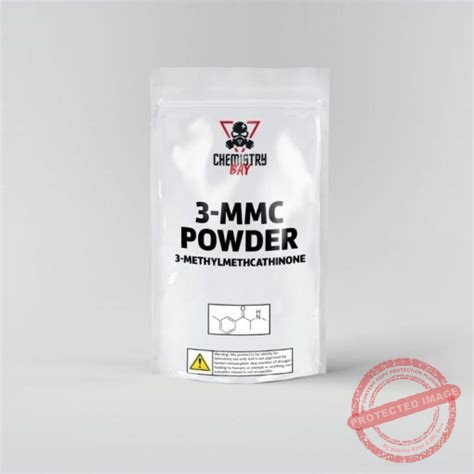
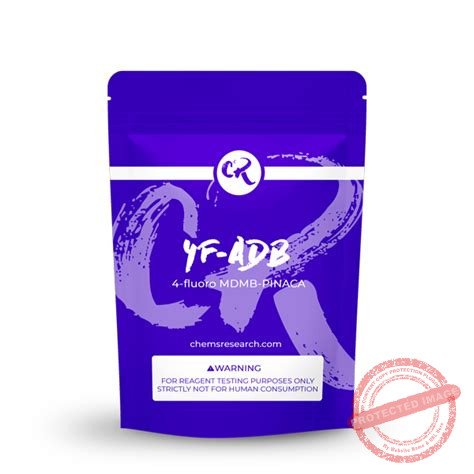
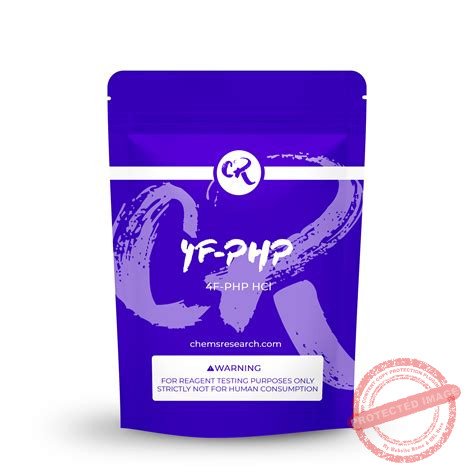
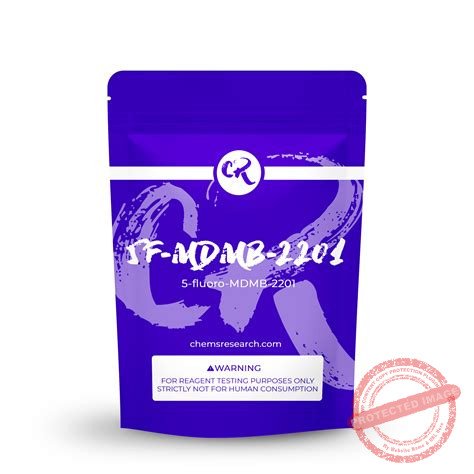

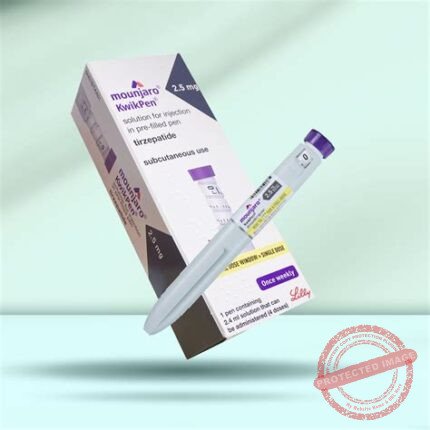

Reviews
There are no reviews yet.